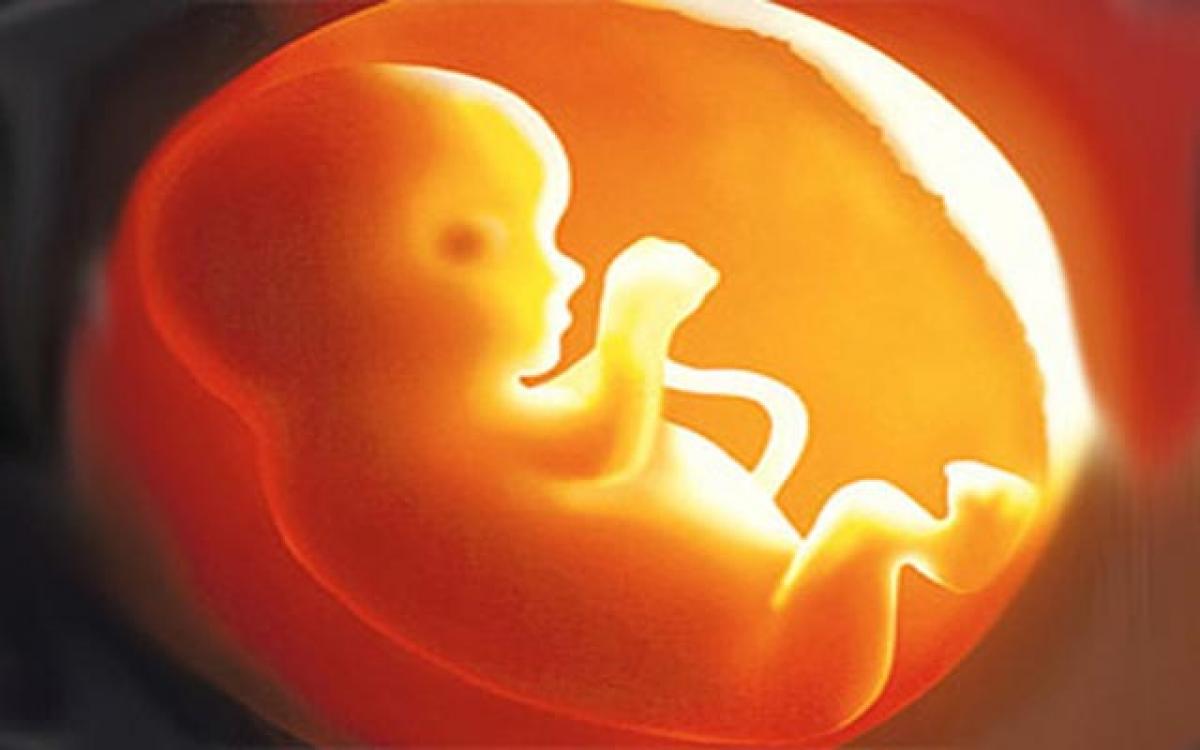Live
- Chandrababu Advocates Strict Measures for Social Welfare and Infrastructure Development in AP
- Show of brotherhood by Vijayan, Stalin at event to honour Dravidian icon
- District Collectors’ conference with CM begins
- Celebrations kick off in Saudi Arabia to welcome FIFA World Cup 2034
- Google Unveils Jules AI to Help Developers Fix Code Errors
- Bengaluru Techie’s Tragic Suicide Sparks Outrage Over Family Disputes and Legal Failures
- Crucial Union Cabinet meeting to discuss One Nation One Election
- Irrigation AE Nikhesh Kumar Arrested in Disproportionate Assets Case, Granted 4-Day Custody
- Your Daily Horoscope for December 12, 2024: Unlocking Mysteries of the Stars
- Hyderabad: 18-Month-Old Girl Dies After Being Hit by Car in Jawaharnagar
Just In

More male babies were victims of foeticide than female in 2014, the latest year for which data is available, according to national crime data, indicating the extent of under-reporting.
NCRB reports 54 male cases against 50 female in 2014
More male babies were victims of foeticide than female in 2014, the latest year for which data is available, according to national crime data, indicating the extent of under-reporting. As many as 53 male foeticides were reported in 2014, compared to 50 cases of female foeticides, according to National Crime Records Bureau (NCRB) data. The sex of four foetuses was not known.
Since a law criminalising sex selection came into force 20 years ago in 1996, 350 people have been convicted, which is nearly 18 every year, according to a Lok Sabha reply on August 5, 2016. That this is a vast underestimate is obvious from India's declining child sex ratio (the number of females to 1,000 males under six years of age), which fell from 945 in 1991 to 918 in 2011.
"Of the 12 million girls born in India, one million do not see their first birthday," said Kamini Lalu, an Additional Sessions Judge in an order in 2014, quoted in the Business Standard. "As a result of this human trafficking has become common in various states of India where teenage girls are being sold for cheap money by poor families, being treated as sex objects with more than half of such cases going unreported."
As many as 238 foetuses and new-borns were abandoned in south Delhi alone, between 1996 and 2012; of these, 115 were males, 110 were females, and sex of 13 foetuses could not be ascertained, according to an All India Institute of Medical Science study, the Indian Express reported on August 17, 2016.
Males were predominant, but on closer examination, "females out-numbered males" among the foetuses five months (20 weeks) of gestational age, C Behera, one of the co-authors of the report, said. "Owing to the societal bias in favour of a male, this could mean that selective female foeticide happened during this period. In India, medical abortion is allowed only up to 20 weeks of gestational age and criminal abortions and selective female foeticide subsequent to antenatal sex determination are more likely before 20 weeks of pregnancy," Behera said.
As many as 2,296 cases have been filed across India for illegal sex-determination tests as of March 2016, the government told parliament. Of the 107 foeticides -- NCRB does not provide data on male or female foeticides by state -- reported across India in 2015, Madhya Pradesh reported the most (30), followed by Rajasthan (24), Uttar Pradesh (11), Punjab (10) and Maharashtra (7). NCRB started collecting data for female foeticide only from 2014, the government told parliament.
Sex selection cases are filed under the Pre-Conception and Pre-Natal Diagnostic Techniques Act, 1994. Rajasthan, Maharashtra, Punjab, Haryana and Uttar Pradesh account for 73 per cent of all reported sex-determination tests nationwide, an obvious under-estimate, as we said, given the number of foeticides reported by independent studies.
In all, 350 convictions were made and 100 medical registrations were cancelled nation-wide over two decades. Uttar Pradesh, Rajasthan and Bihar are the worst states to be a woman, IndiaSpend reported in July, 2016. Women in these states are most likely to be aborted as children, have the lowest literacy rates, marry earliest, die most frequently while pregnant, bear the most children, have the most crimes committed against them and are least likely to be employed.
The sex ratio at birth in India was 908 for 2010-12, which improved to 909 during 2011-13. Among India's 21 larger states, Haryana is the worst, with 864 females per 1,000 males (2011-13), according to data provided by the ministry of health and family welfare (MOHFW) to parliament on April 29, 2016.
Punjab (867), Uttar Pradesh (878), Delhi (887), Rajasthan (893) and Maharashtra (902) are other worst-performing states. Chhattisgarh has India's most favourable sex ratio at birth, with 970 females per 1,000 males, followed by Kerala (966) and Karnataka (958), among the larger states. Jammu and Kashmir, Maharashtra and Haryana have had the worst decline in the past 30 years in child sex ratio, according to the MOHFW annual report 2015-16.
India's sex ratio is 943 per 1,000 males, as per Census 2011. Haryana is the worst performing among 28 states, with 879 females per 1,000 males, followed by Jammu and Kashmir (889), Sikkim (890), Punjab (895), and Uttar Pradesh (898). The overall Indian sex ratio should be at least 950 women to 1,000 men (nature produces more males than females, as boys are more vulnerable to infant diseases than girls). (IndiaSpend)
By Chaitanya Mallapur

© 2024 Hyderabad Media House Limited/The Hans India. All rights reserved. Powered by hocalwire.com







